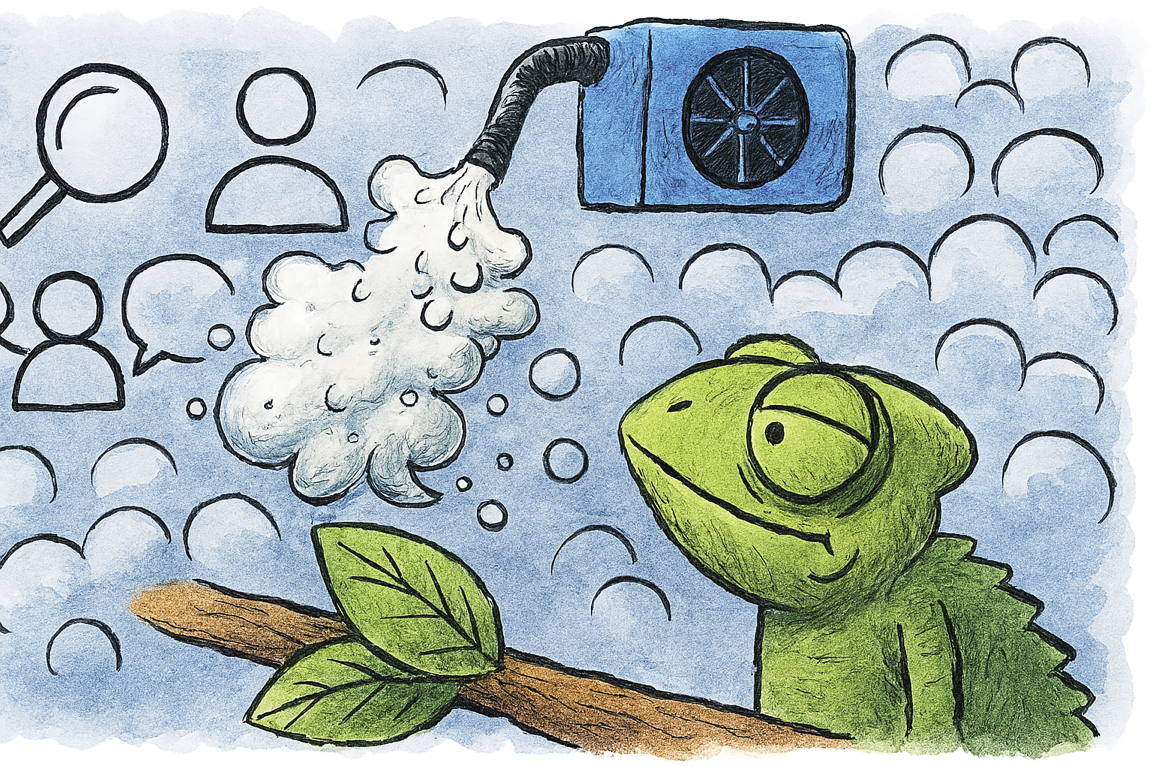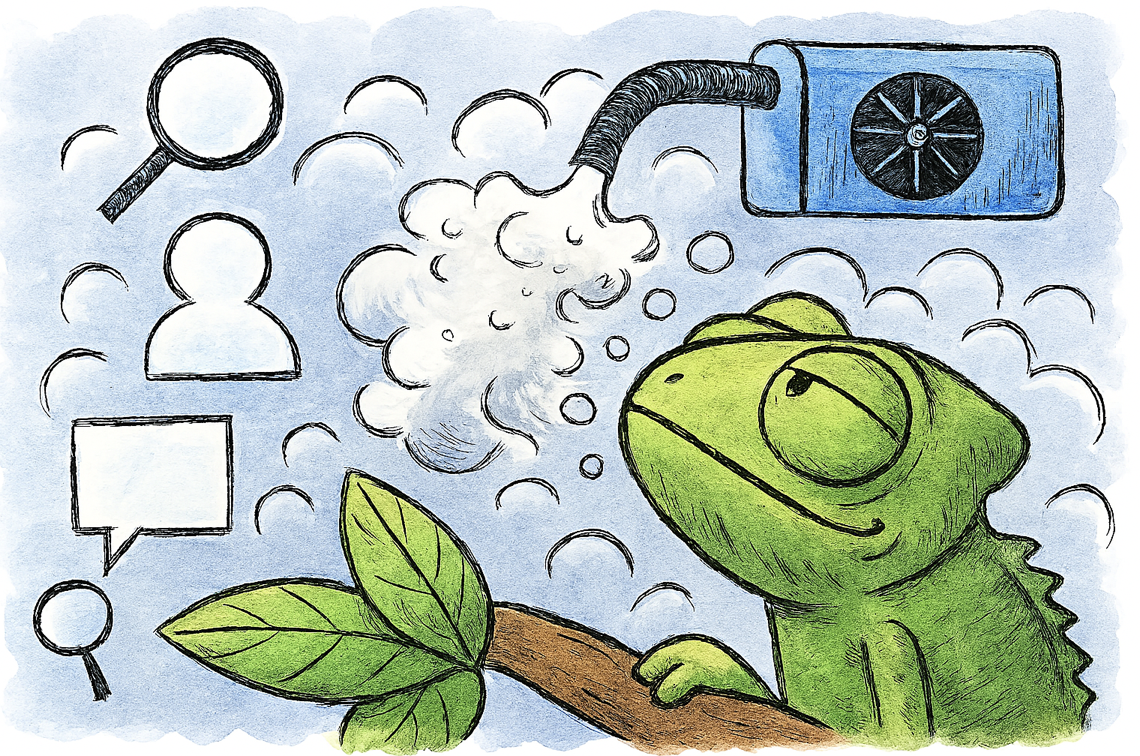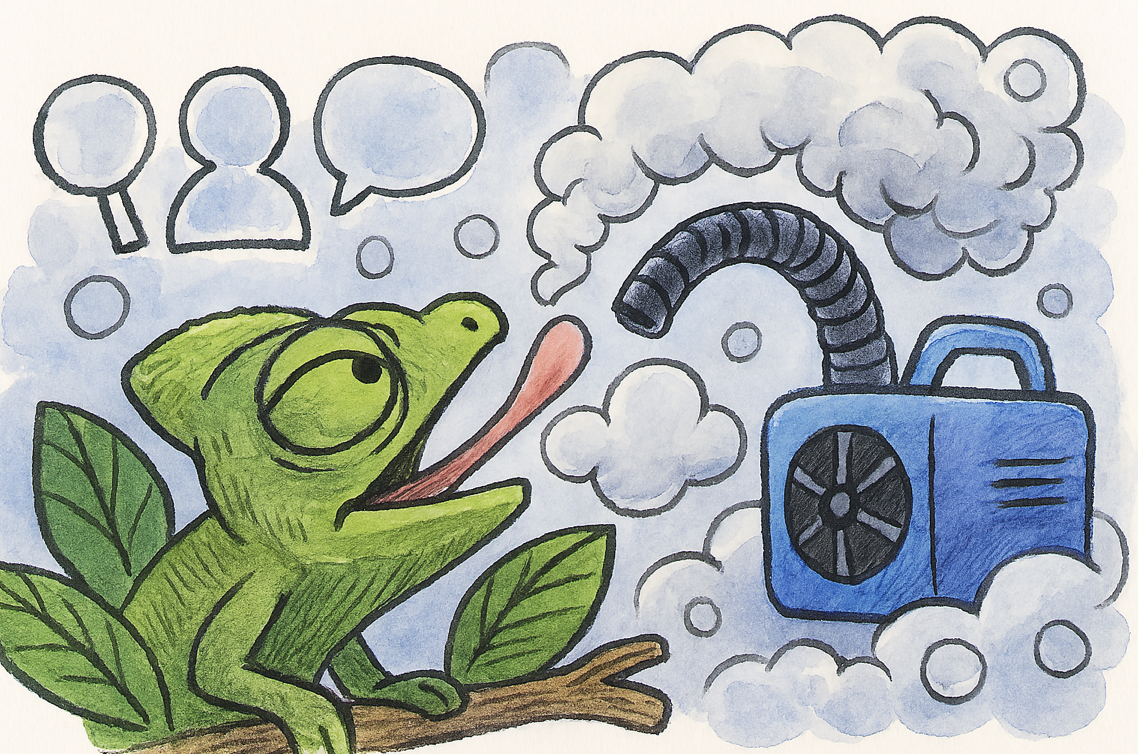Call for Fogging Research
Call for Research Participation: Fogging in Chameleonoculture
A plebiscite to document real-world evidence and community experience
In Archaius 1(4): 8–28, I (Petr Nečas) published the foundational article
"The Naturalistic Chameleonoculture – a breakthrough in captive management of chameleons. Part 2: Hydration and the Mystery of Fog-Drinking."
This work introduced the concept of fog drinking in captive chameleons, describing how chameleons utilize airborne moisture as a primary hydration source. The article provided observational data, anatomical context, and practical implications for husbandry—marking a turning point in hydration strategies for sensitive taxa.
Since its publication in 2020, the use of fogging systems under controlled, safe conditions has expanded across the herpetoculture community. Keepers and breeders have reported improved hydration, naturalistic behavior, and reduced stress in many species and hundreds of specimens. Yet despite this growing body of practice-based evidence, fogging remains a target of vocal opposition—particularly on social media.
Almost all critics of fogging have never used fogging systems, nor have they published any empirical data to support their reservations. Instead, they circulate speculative concerns, theoretical risks, and fabricated scenarios that usually lack anatomical, physiological, or ecological grounding. This has led to confusion, misinformation, and unnecessary division within the community.
This plebiscite aims to provide statistical proof of evidence.
We invite all keepers, breeders, researchers, and field observers who use fogging systems to participate in a structured survey. The goal is to collect and analyze real-world data on:
Species-specific responses to fogging
Frequency, duration, and timing of fogging sessions
Observed behavioral and physiological outcomes
Setup parameters (temperature, relative humidity, ventilation)
Perceived risks versus actual complications
Keeper experience level and background
The results will be published in a peer-reviewed journal and made available to the global community.
This is not a debate—it is a documentation effort. Your participation will help establish a data-driven foundation for future guidelines, dispel misinformation, and elevate responsible herpetoculture.
What Is Required
Contributor Profile
Enclosure Setup
Environmental Conditions
Fogging Practice
Observations and Outcomes
- Data Use and Consent
Anonymity option
Share the link with your colleagues:
https://forms.gle/ELbs8wakChWukApc8


